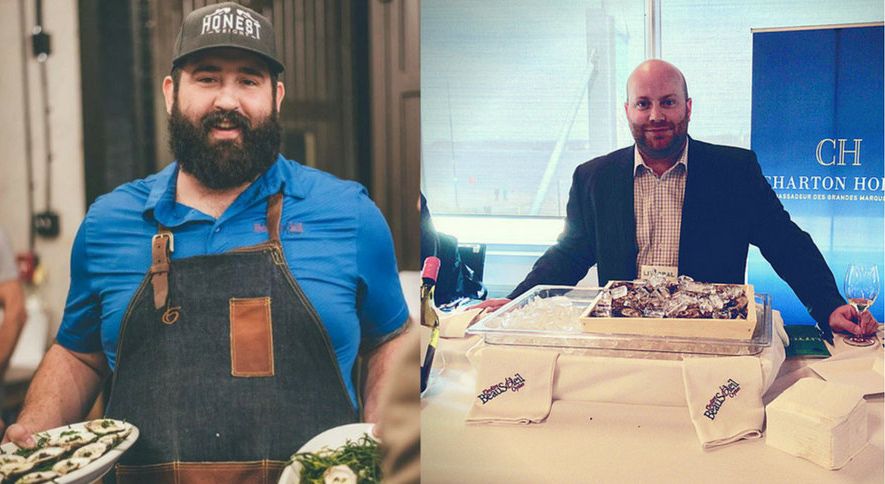NEGUAC, Canada ― When the harbors aren’t frozen, Maxime Daigle and his older brother Jean-Francois often take to the cold waters off New Brunswick in one of their family’s flat-bottomed boats to harvest oysters. The siblings are among hundreds of producers along this rocky coast who grow oysters for La Maison BeauSoleil in the company’s distinctive floating bags.
For the Daigles this is a family business. Maxime’s father, Maurice, co-owns La Maison BeauSoleil, an oyster grower, packer and distributor that he runs with his business partner, Amédée Savoie, whose son, Allain Savoie, also works in the company.
When the business started growing and selling oysters from the coastal village of Neguac, at the southern end of the Acadian Peninsula, each wooden box was painstakingly packed by hand.
That was 18 years ago. La Maison BeauSoleil ― called simply BeauSoleil within the seafood business ― has since become Canada’s largest producer of cocktail-sized oysters. Demand for its tasty, teardrop-shaped product is at an all-time high. While the company is working hard to keep up, business as usual isn’t cutting it.
So a new generation of robots is coming.
While details are still closely guarded, the company is developing a state-of-the-art automated sorting and packing line that will revolutionize its business. Software-controlled robots, able to mimic the small, complicated movements of human oyster pickers, will give the company a new competitive edge, says Savoie, and allow them to double production.
This is the type of investment and technology that has often been missing from this country’s traditional fishing economy. Many of Atlantic Canada’s rural coastal communities have been treading water since overfishing caused cod to collapse in the 1990s, and falling further behind could signal the end for the region’s historic way of life.
But this is a family business, and the co-owners are trying to build a legacy for their children in this remote region.
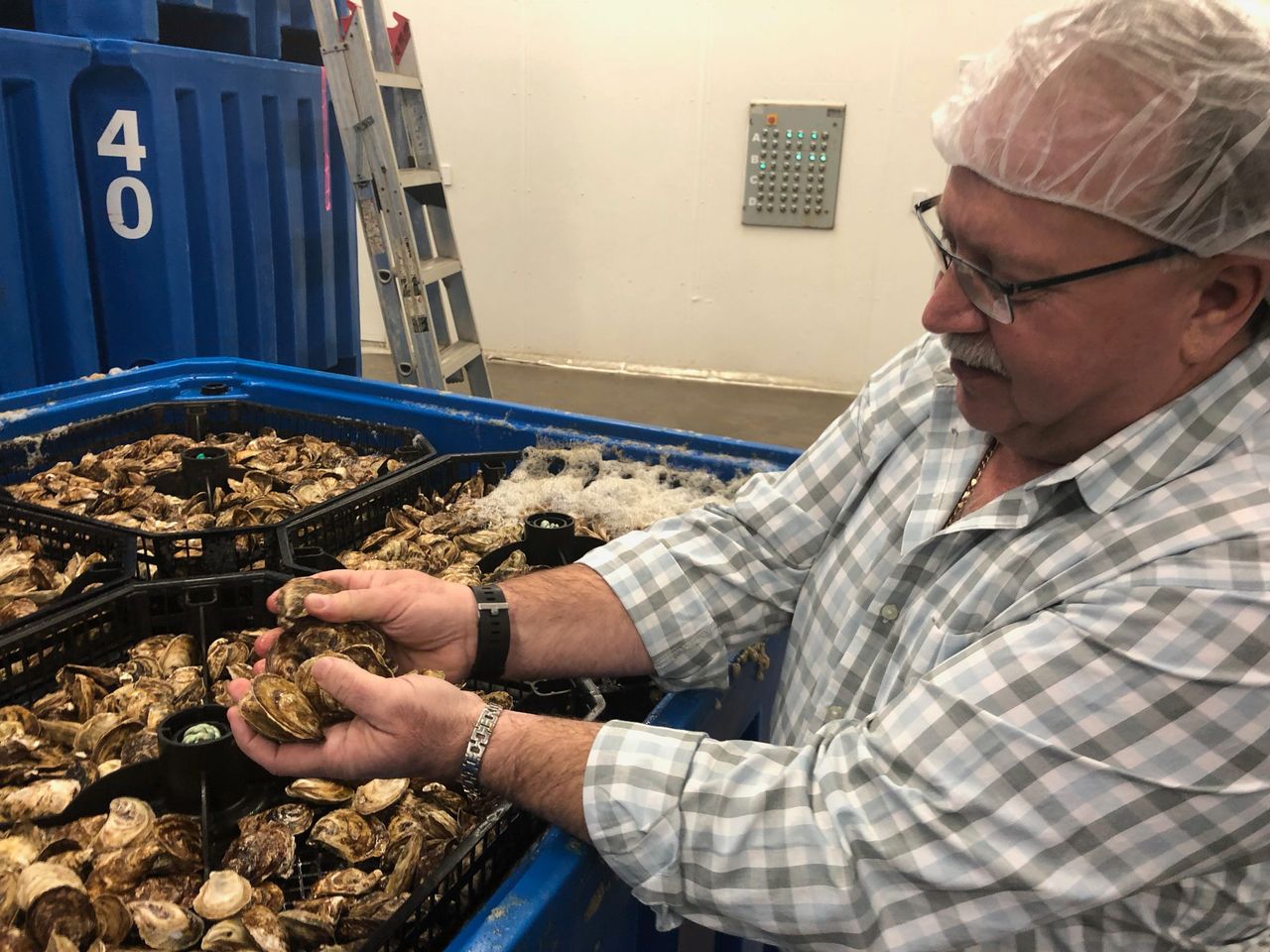
According to a recent report from Ryerson University’s Brookfield Institute, 62 percent of resource-sector jobs, including those in the fisheries, are vulnerable to automation. While profoundly needed by most production-oriented industries, that isn’t always a good news story in a small town like Neguac, says Creig Lamb, a study co-author.
“There’s an understanding that automation is happening and you either adapt or perish,” he says. “The danger is that the people who either don’t want to or can’t acquire the new skills that are required, they’re the most vulnerable.”
Helping these workers, like BeauSoleil’s oyster packers, can be a major challenge, he says. But while many fear losing jobs to technological change, many industry observers ― including the Daigles and Savoies ― say a revolution can’t come soon enough.
Creepy Robots
Shellfish is not an easy sector to automate, particularly in a region like New Brunswick where fisheries harvest a hugely diverse range of species. While the same robot can be used to manufacture different types of cars or computers, for example, the physical differences between a crab and a lobster, or a shrimp and a scallop, mean the processing equipment needed is often radically different.
But innovation is happening. A few years ago, a short, slightly grainy video with the creepy vibe of a horror film was quietly posted online by a mechanical engineer. The video shows a robot methodically picking up a leggy snow crab by its central shell and depositing it into a clamp. With eerie precision, a round, spinning blade descends and rapidly dismembers the animal’s leg sections from its body.
That robot is now in commercial testing. It was developed by the St. John’s, Newfoundland-based Canadian Centre for Fisheries Innovation, a nonprofit organization owned by Memorial University. Managing Director Robert Verge says this type of device has been badly needed by processors in the region for a long time.
Another issue the shellfish industry faces is the seasonality of Canada’s fisheries. A million-dollar robot doesn’t provide great return on investment if it’s only used a couple of months a year.
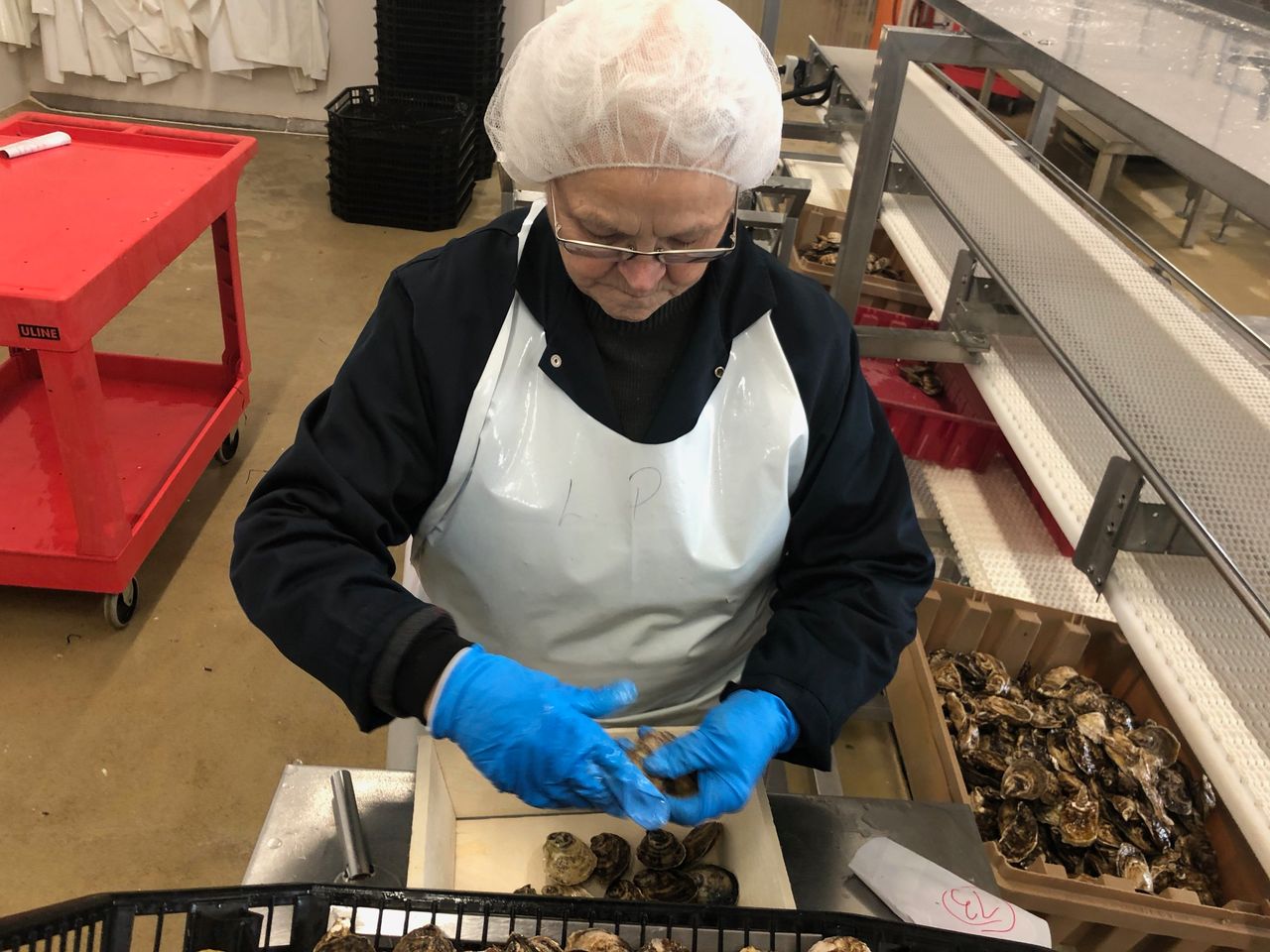
In coastal New Brunswick, like many rural Atlantic communities long kept afloat by seasonal employment in fish processing plants or on boats, demographics are becoming increasingly dire. Young people “vote with their feet,” as Verge says, by moving west and to more urban communities. The workforce is plummeting as demand for Canadian seafood spikes. Between 2011 and 2016, the region saw the biggest decline in the proportion of people aged 15 to 64 since 1871, according to Statistics Canada, and the largest increase in the proportion of seniors.
This sounds familiar to BeauSoleil’s Savoie, who says fish plant work often requires long days and physically demanding, repetitive tasks. Right now, two of his best oyster packers are over 60 years old.
“[They] have all said to their children, ‘Don’t do what we do, go for something else,’ and I don’t blame them,” he says. He’s concerned about finding enough workers, as well as competition on price and consistency from overseas producers.
“If industry doesn’t [adapt] in the next 10 years, there’ll be bigger problems,” Savoie says.
Anything You Can Do, It Can Do Better (Maybe)
Back when BeauSoleil first hit the North American market, oysters were typically sold by weight, so number counts didn’t matter. But as the company made a name selling its bite-sized, individually priced oysters into a seemingly insatiable market, the importance of getting the right number in each box became increasingly important. It invested in cutting-edge optical sorting machines from France in 2005 and was the first Canadian company to adapt the technology for use with oysters.
In 2004, the company sold 25 tons of oysters; in 2017, it sold 800 tons. The company currently employs about 50 people, says Savoie, and spends the equivalent of about $776,000 on wages every year. Without new so-called “pick and place” automation on its processing line, capable of packing boxes like a human worker, they’re at the point where growth is nearly impossible.
Plus, robots don’t make errors the way humans often do. “Human beings aren’t able to judge [precise measurements] perfectly,” software developer Michel Caissie says in French. He owns Infraprotech, the company contracted by BeauSoleil to program its new robots.
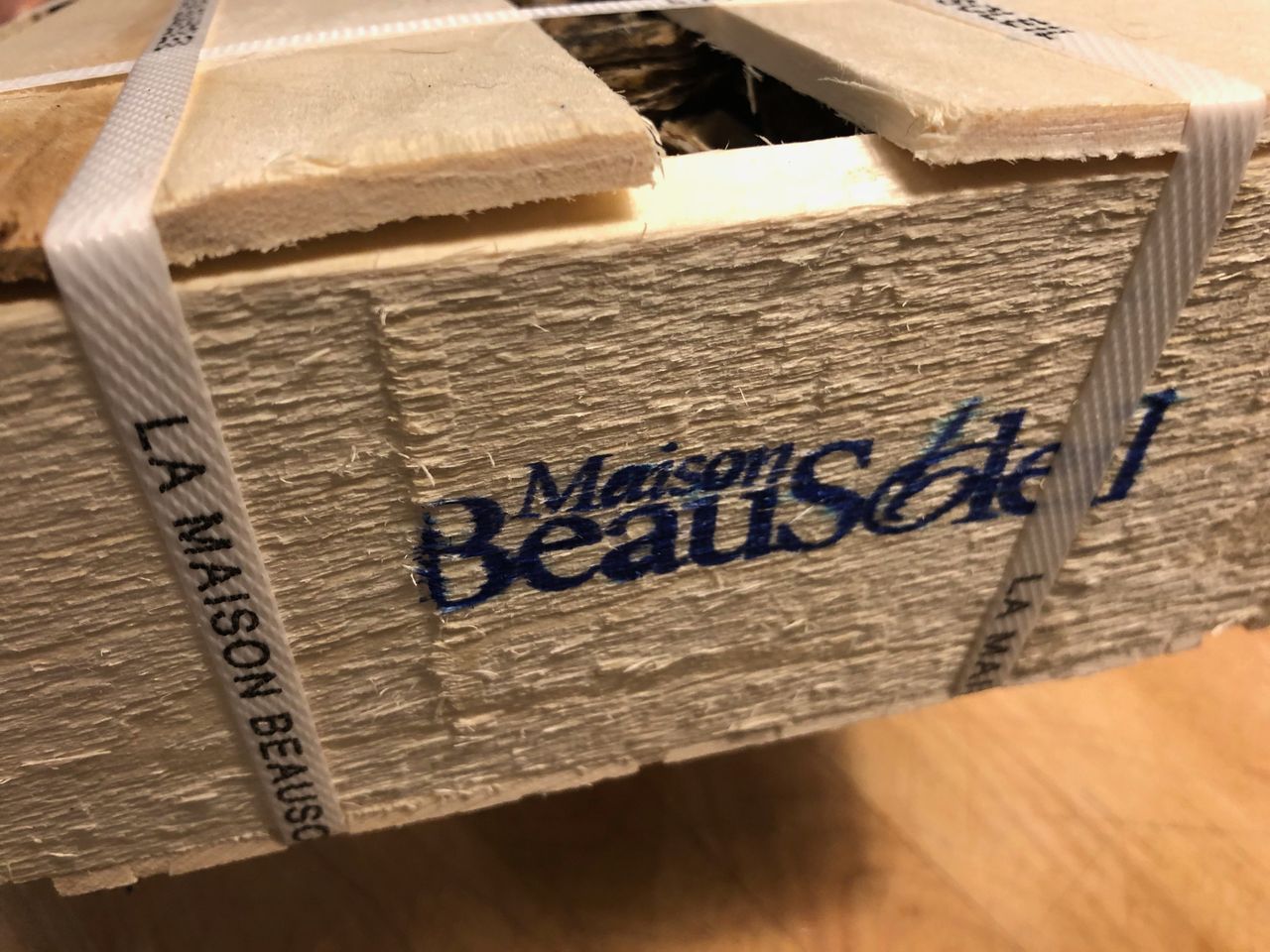
Three years ago, when this project with BeauSoleil started, Caissie’s devices identified a whopping 29 individual human movements in the packing process, including picking an oyster up, measuring it, looking at it and eventually placing it in the box.
“Just to pick one oyster takes three-quarters of a second,” Savoie says. “That times 12 million oysters [the number they ship each year] ― that’s a lot of time.”
Then there’s the cost to human bodies. Automating the simplest, yet most straining tasks done by humans can dramatically reduce risk of workplace injury, says Caissie, whose software calculates where the most acute dangers are.
“We can’t continue working this way. The process isn’t adapted to human beings,” Caissie says. “That’s why people don’t like this work.”
Still, robots are fallible, and Savoie has been careful to build in workstations where humans can still pack boxes of oysters ― just in case the robots break down.
Not A Fear Of Change; Fear Of Loss Of Control
At a recent international seafood show in Boston, BeauSoleil bought a $7,000 waterproof remotely operated vehicle that can be used to locate oyster bags sunk to the ocean bottom for winter storage and help the company drill more accurately into the rocky seabed.
Maxime Daigle used it a couple of weeks ago and was thrilled to discover a cache of oysters that had drifted away from its GPS marker. He’s excited by the potential that technological advances, including automation, have for his industry.
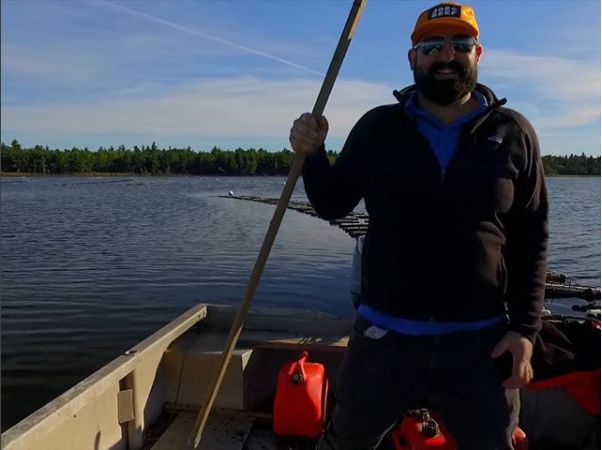
“I think it makes my job way more interesting. When you’re sorting oysters by hand it’s the most boring thing,” he says. “With automation it goes by way faster, you’re able to focus on other things. It makes my job a bit more specialized.”
Currently the company’s youngest employee at 26, Daigle says it’s important for the company to be able to supply the demand for its product.
“You want to be able to face the future,” he says. “Particularly with the population of labor here in New Brunswick, which is dying a bit.”
Automation definitely scares some members of his community, says Savoie, but he’s emphatic that the company’s goal is to increase production, not to cut jobs. Yet, in the face of all this change, there’s at least one thing BeauSoleil says it won’t be automating: its blue-stamped, handmade wooden oyster box, which is manufactured year-round locally.
Verge, who spent much of his career helping businesses in financial trouble, says that Atlantic Canadians aren’t necessarily afraid of change.
“They’re afraid of being changed without any involvement or input or opportunity to direct their destiny,” he says. “The fishery, for a long time, was considered an employer of last resort.”
He says the region’s industry needs to be more efficient and humane, and technologies could help.
“We’ve got to reinvent this industry for the future, not perpetuate a model that really didn’t work that well in the past,” Verge says. “If we can do that, there’s tremendous opportunity.”
For more content and to be part of the “This New World” community, follow our Facebook page.
HuffPost’s “This New World” series is funded by Partners for a New Economy and the Kendeda Fund. All content is editorially independent, with no influence or input from the foundations. If you have an idea or tip for the editorial series, send an email to thisnewworld@huffpost.com
